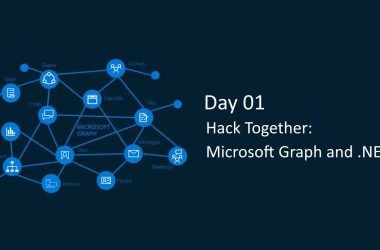Vectors in AI: A Bridge Between Code and Business
Note from the series “About AI for Yourself and Others”
Whether you’re shaping a digital strategy, integrating AI into your workflow, or just curious about what makes an assistant respond intelligently — understanding one simple idea can change the way you think about AI.
That idea is the vector — a compact way AI represents meaning in words, documents, questions, even emotions.
Knowing how vectors work will help you:
- Find information without exact keywords
- Train AI on your company’s internal knowledge
- Automate processes in HR, customer support, and beyond
Let’s see why vectors are at the heart of modern AI — and why they matter for your business.
Example: Vectors in HR — From Filtering to Team Building
In HR, AI has moved far beyond scanning resumes — now it can help you build stronger, more aligned teams. With vector representations, we can work with people in smarter ways — from building stronger teams to checking cultural fit and mapping career growth.
Here’s how it works:
-
📄 Resumes as vectors — AI transforms each resume into a set of numbers capturing the candidate’s skills, experience, and professional style. For example, someone with extensive project management and team motivation experience will have higher values on those dimensions.
-
🧾 Job descriptions as vectors — Each job description is also converted into a vector, reflecting tasks, goals, and company culture.
-
🤖 Semantic matching — AI compares resume and job vectors to see how well they align in meaning and context, not just by shared keywords.
What this gives to HR and business:
- ⚡ Faster team assembly for projects, using past roles and shared values as a guide.
- 🧠 Better candidate discovery, even if resumes lack the “right” keywords.
- 🧭 Cultural fit insights — AI can estimate a candidate’s communication style, preferences, and certain soft skills by analyzing the choice of words and phrasing in their resume.
The Resume of the Future
Not long ago, candidates were advised to keep resumes short and scannable — because recruiters often spent just 6–8 seconds deciding whether to read further or move on.
Today, we’re moving toward rich, detailed project histories — and that’s a good thing.
With vector analysis, AI can go far beyond job titles. It can understand:
- 📂 Projects a candidate worked on
- 🏷️ Roles they played in each project
- 🛠️ Problem-solving approaches they used
- 📈 Skill growth over time
This means format matters less — AI focuses on the meaning of someone’s experience, even if it’s not in the usual one-page format.
Technical Basics: What Is a Vector?
If you strip away all the AI buzzwords, a vector is simply a way to represent meaning as numbers.
It’s a list of coordinates that describes something — like text, an image, or a question — in a space with hundreds or even thousands of dimensions.
Example: the word “leadership”
After processing by an AI model, it becomes a vector like this:
[0.134, -0.278, 0.045, 0.892, -0.116, 0.003, 0.721, -0.443, 0.056, ...]
You can think of a vector as a GPS coordinate in a city of meanings. Each word, sentence, or document is a location on this map. Words with similar meanings cluster together in neighborhoods, and streets connect related ideas. For example, the word leadership would be located in a “Neighborhood of Leadership,” surrounded by streets and blocks where related words live — management, motivation, and teamwork. Nearby streets connect to other neighborhoods, like “Communication” or “Strategy,” allowing AI to navigate from one concept to another, finding words or ideas that are semantically close, even if the exact words differ.
In short, AI doesn’t look for exact words — it looks for similar meanings, navigating the “city of words” to understand context and relationships.
These vectors don’t appear out of nowhere. They are created by specially trained AI models, most commonly variants of BERT and its successors. The model reads text (or other data) and assigns each word, sentence, or document a position in the “city of meanings” we described. You could also use other models, like Gemma3, but for most business applications this can be overhead — BERT-based models or their lighter variants usually provide a good balance between quality and efficiency.
Models That Create Vectors
| Model | Year | Developer | Notes |
|---|---|---|---|
| RoBERTa | 2019 | Trained on more data than BERT | |
| ALBERT | 2019 | Smaller size, similar accuracy | |
| DistilBERT | 2019 | HuggingFace | Faster and lighter, good quality |
| E5 | 2022 | Microsoft | Made for search and RAG tasks |
| OpenAI Ada v2/v3 | 2022–24 | OpenAI | Works well with large vector databases |
| InstructorXL | 2023 | HuggingFace/Alibaba | Adapts to specific tasks |
How It Works in a Business App (5 Steps)
-
Text → Model → Vector
A document or query is transformed into a vector by an AI model. This vector captures the semantic meaning of the text in numerical form.
-
Save in Database
The vector is stored alongside the original text — for example, in PostgreSQL using pgvector.
-
User Query → Vector
When a user asks a question, the query is also transformed into a vector by the same model, ensuring that both documents and queries are in the same semantic space.
-
Compare Vectors
The system compares the query vector with stored vectors to find the closest matches:
- Using SQL — e.g.,
ORDER BY embedding <-> query_vector LIMIT 5in PostgreSQL with pgvector. This returns the nearest vectors based on numerical similarity. - Using RAG (Retrieval-Augmented Generation) — an AI assistant first retrieves the most relevant documents via vector similarity, then generates answers based on them.
- Using SQL — e.g.,
-
Return Result
The system delivers the most relevant matches to the user — for example, a list of similar documents, products, or candidates.
If connected to an AI assistant, these results can be used as context to generate a detailed, personalized answer.
This approach allows AI to retrieve documents or generate answers based on meaning, not just exact keyword matches. Advanced topics like indexing, normalization, and fine-tuning can improve efficiency and accuracy, but these five steps cover the core idea.
Thanks for reading! If you want to explore how to build AI assistants or semantic search tools for your business, follow me for more articles in this series.





